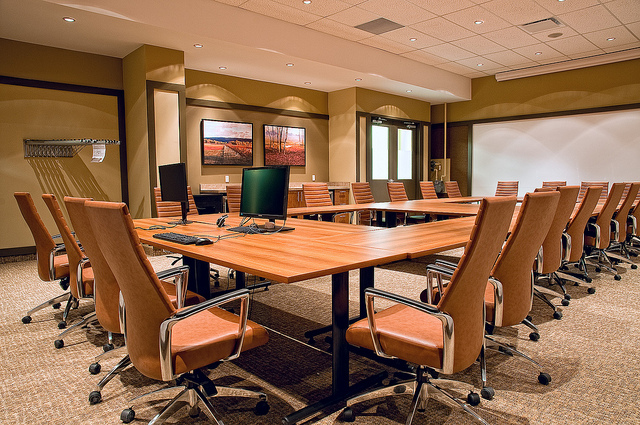4 Different Types of Office Space
So you’ve decided to invest in some office space for your growing business – congratulations! This can really speak miles about the kind of business service you want to purport to your customers, to your employees and to your competitors. If your business represents design and innovation, your office and its building should shout out just that. If you want it to represent discreetness and simplicity, the space should reinforce that too. The following are just four different types of office spaces to get your ideas flowing.

CC image credit to Mo Riza
1. Traditional
The most common type of office, traditional spaces are usually let out for contracts between three and five years, but some can be let out at leases as high as twenty-years. You’ll know the classic simplicity of such an office space from going to the likes of your broker or accountant. Such a space prides itself on functionality, versatility and on catering to a large amount of staff. Traditional offices can come open plan, privatised, or a mixture of both styles. Most commonly, cubicles are implemented to give a sense of privacy, all while retaining the function of organised structure.
2. Courtyard Scheme
There’s something about a courtyard being incorporated into office space that really gives off a sense of community, of style and of relaxation to customers, employees and contacts alike. A courtyard scheme can be a great way of showing innovation and design, and can also serve as a great meet-up spot or central area around which a large group of employees or visitors can identify themselves with. Jewellery Quarter Office Space on30stpaulssquare.co.uk is a great example of office space that incorporates a courtyard scheme to bring out the best in its innovative design, which makes it the perfect option for an artists hub, a campus-style for all types of businesses, or for those specialising in fashion.
3. Lobby
A lobby can provide another perfect central amenity for staff and visitors alike, and a nice lobby can make a great first impression too. It is generally utilised as the public space and public face of a business, so it makes sense to incorporate it into office space as customers are at the heart of all businesses. Finishes, furniture, signage and sleek display can all identify a lobby as a welcoming spot where information can be obtained with ease.
4. Conference Rooms

CC image credit to reynermedia
Ideal for meetings, thrashing out ideas, training and launching new products and plans, conference rooms are perfect open spots for office space as they can be easily adapted to suit a range of needs and presentations as they crop up. It is perhaps the most flexible type of space that’s required by most office-based institutions, and can be a particularly great asset to those businesses where franchises or products are involved.
These are just a few of many different kinds of office spaces to consider when planning the type of office space you’d like to have and present for your business. Each has its own function and style; so in order to achieve optimum functionality and productivity levels within your business, it’s essential to give the design aspect of the project some careful consideration.





Discussion
There are no comments on this entry.